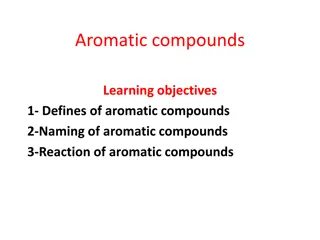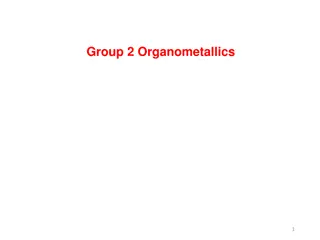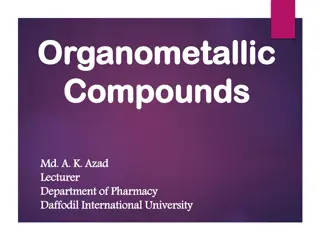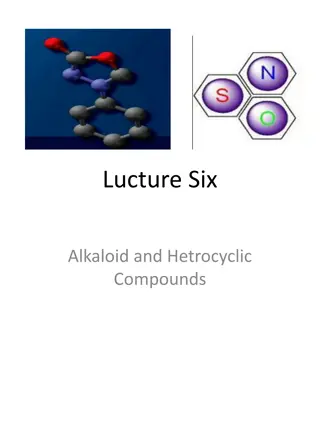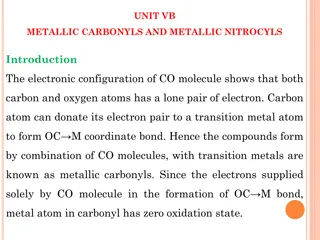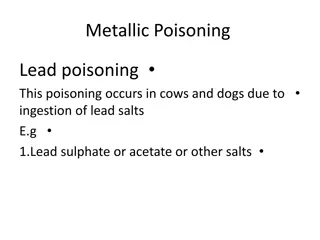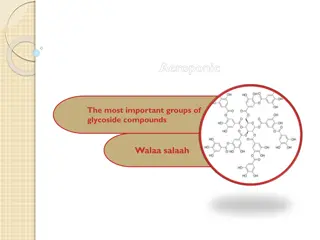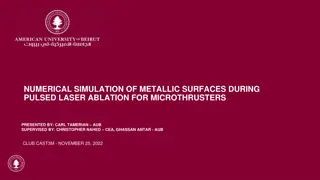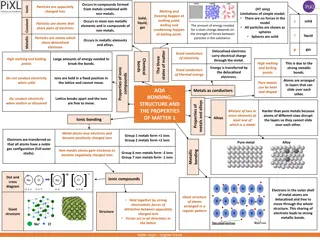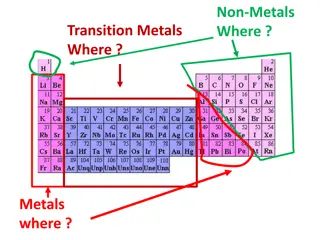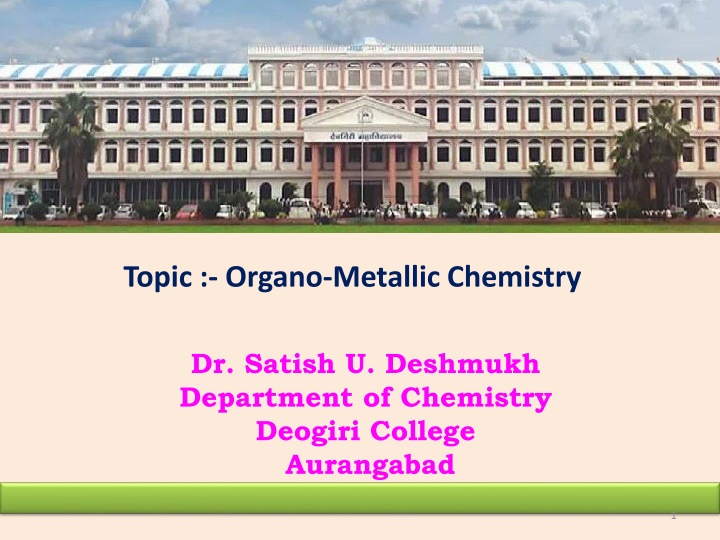
Exploring Organo-Metallic Chemistry and Organolithium Reagents
Discover the fascinating world of organo-metallic chemistry with a focus on organolithium reagents. Learn about their synthesis, structure, chemical properties, and applications in organic synthesis, including nucleophilic addition reactions. Dive deep into the metalation reactions with compounds containing acidic hydrogen, offering a comprehensive insight into this specialized field of chemistry.
Download Presentation

Please find below an Image/Link to download the presentation.
The content on the website is provided AS IS for your information and personal use only. It may not be sold, licensed, or shared on other websites without obtaining consent from the author. If you encounter any issues during the download, it is possible that the publisher has removed the file from their server.
You are allowed to download the files provided on this website for personal or commercial use, subject to the condition that they are used lawfully. All files are the property of their respective owners.
The content on the website is provided AS IS for your information and personal use only. It may not be sold, licensed, or shared on other websites without obtaining consent from the author.
E N D
Presentation Transcript
Topic :- Organo-Metallic Chemistry Dr. Satish U. Deshmukh Department of Chemistry Deogiri College Aurangabad 1
Organo-Metallic Compounds 2) Organolithium Reagents Organo-lithium reagents or compounds General Representation R-Li R= Alkyl and acts as a Nucleophilic Group Li= Metal and Highly Ionic Bond This reagent has large application in organic synthesis to C-C bond. Use of R-Li reagents offers a very efficient method for coupling of two different carbon moieties . Most important alkyIlithium reagents is the butyl lithium. 2
Organo-Metallic Chemistry Synthesis of Organo-lithium reagents 3
Organo-Metallic Chemistry Structure of Organo-lithium reagents The straightforward alkyIlithium reagents exist in as hexamers in organic solvents specially hydrocarbon . In ethers tetrameric structures are typically major 4
Organo-Metallic Chemistry Chemical Properties of Organo-lithium reagents Metalation Reaction with compounds containing acidic hydrogen. This reaction is an important means of preparing a variety of newer organo-lithium reagents from butyl- lithium. Acetylenic hydrogen is also very reactive or more acidic protons towards lithiation because of the high acidity of acetylenic hydrogen. 5
Organo-Metallic Chemistry Chemical Properties of Organo-lithium reagents Metalation Reaction with compounds containing acidic hydrogen. This reaction is an important means of preparing a variety of new lithium reagents from butyl-lithium. Acetylenic hydrogen is also very reactive towards lithiation because of the high acidity of acetylenic hydrogen. 6
Organo-Metallic Chemistry Chemical Properties of Organo-lithium reagents Metalation Reaction with compounds containing acidic hydrogen 7
Organo-Metallic Chemistry Chemical Properties of Organo-lithium reagents Nucleophilic Addition Reactions Organo-lithium reagents with Aldehydes : 8
Organo-Metallic Compounds Chemical Properties of Organo-lithium reagents Organo-lithium reagents with aldehydes 9
Organo-Metallic Compounds Nucleophilic Addition Reactions Organo-lithium reagents Imines: 14
Organo-Metallic Chemistry Organo-lithium reagents with Nitriles: 15
Organo-Metallic Chemistry Organo-lithium reagents with Carbon Dioxide, Sulphur Dioxide, Carbon Disulphide 16
Organo-Metallic Chemistry Nucleophilic Substitution Reactions at sp2-hybrid carbons: Organo-lithium reagents with Acid Chlorides, Esters, Lactones And Amides 17
Organo-Metallic Chemistry Nucleophilic Substitution Reactions at sp2-hybrid carbons: Organo-lithium Reagents with Carboxylic Acids: 18
Organo-Metallic Chemistry Thank you 19





